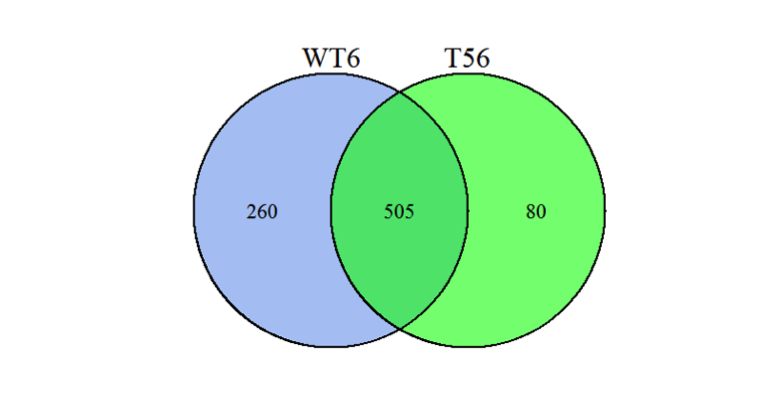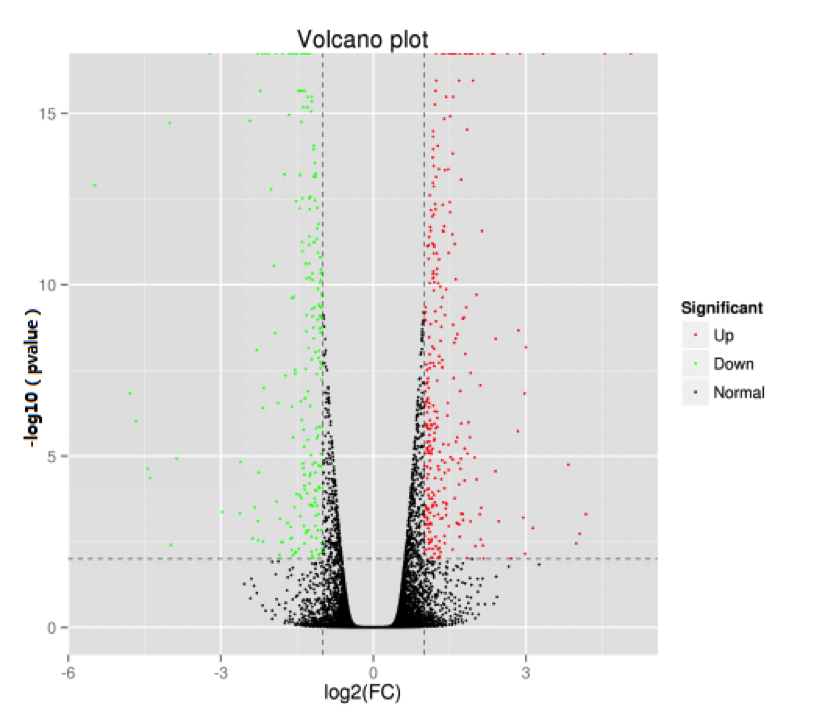Differential Expression Protein Statistical Analysis
Differential protein analysis can greatly facilitate the discovery of new biomarkers, enhance the accuracy of biomarker identification, and hold significant value for clinical disease analysis. Baitaike can provide more precise differential protein analysis based on statistical data to identify significant differences in protein levels in different physiological states and tissues. In the statistical process of differentially expressed proteins, FC≥1.3 (or ≤1/1.3) is used as the statistical criterion for differential proteins. Proteins with FC≥1.3 are considered up-regulated, and proteins with FC≤1/1.3 are considered down-regulated. The number of differentially expressed proteins is shown in the table below:

Table of Differentially Expressed Protein Numbers
1. Venn Diagram
The Venn diagram clearly shows the shared and unique differentially expressed proteins between the two groups:

Figure 1 Venn Diagram of Differentially Expressed Proteins
2. Volcano Plot
The volcano plot allows for a quick view of the differences in protein expression levels between two (groups of) samples and the statistical significance of these differences.

Figure 2 Volcano Plot of Differentially Expressed Proteins
Note: Each point in the volcano plot represents a protein, where the x-axis indicates the logarithmic value of the fold change in expression levels of a particular protein between two samples, and the y-axis represents the t-test p value. The larger the absolute value on the x-axis, the greater the fold change in expression levels between the two samples; the larger the value on the y-axis, the more statistically significant the differential expression, and the more reliable the differentially expressed genes obtained. In the plot, green dots represent down-regulated differentially expressed proteins, red dots represent up-regulated differentially expressed proteins, and black dots indicate non-differentially expressed proteins.
How to order?





